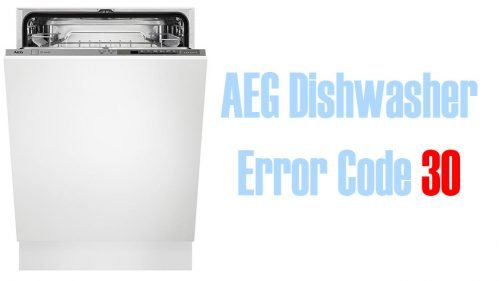AEG appliances are renowned for their superior performance and longevity. But like any piece of machinery, they can occasionally run into problems. One such issue that users often encounter with AEG dishwashers is the error code 30. This article provides an in-depth analysis of the error, what it signifies, and how to troubleshoot it.
The error code 30, also known as the Anti-Flood Device Tripped error, is a common problem that can occur in AEG dishwashers. This error signifies that the dishwasher’s anti-flood system has been triggered due to the detection of excessive water at the base of the appliance.
When the anti-flood system is activated, it shuts off the dishwasher’s water supply to prevent potential water damage. As a user, encountering this error can be frustrating, as it prevents the dishwasher from completing its cleaning cycle. However, understanding the causes of this error can assist you in finding a suitable solution.
The most common cause of the error code 30 is a leak within the dishwasher. This leak could stem from a variety of places such as a cracked hose, a faulty seal, or a loose connection. Over time, these components can wear out and require replacement. In some cases, the leak might result from overfilling the dishwasher, causing water to spill over the edge and trigger the anti-flood system.
Another possible cause is a malfunctioning pressure switch. The pressure switch, which is responsible for monitoring the water level in the machine, could send false signals to the control panel, indicating a flood when there isn’t one. This could prompt the dishwasher to display the error code 30.
Now, understanding the potential causes of the problem, we can move on to troubleshooting techniques. When faced with the error code 30, there are a few steps you can take before contacting a professional:
- Unplug and Inspect: The first step in diagnosing any dishwasher problem is to unplug the machine to ensure safety. After unplugging, you can remove the lower panel and inspect for any signs of water leaks or damage.
- Check for Blockages: A common cause of leaks is blockage. Check the dishwasher’s spray arms, filters, and drain for any food debris or foreign objects. Remove and clean them as necessary.
- Examine the Seals and Hoses: Inspect all seals, hoses, and connections for any signs of damage or wear and tear. If you spot a leak, you may need to replace the faulty component.
- Check the Pressure Switch: The pressure switch can be tested with a multimeter to determine if it’s working correctly. If it shows signs of malfunction, you might need to replace it.
If, after attempting these steps, the problem persists, it’s recommended to contact a professional repair service. Attempting to repair more complex issues on your own may void your warranty or cause further damage to the appliance.
In conclusion, while the AEG dishwasher error code 30 can be a nuisance, understanding what it signifies and knowing how to troubleshoot it can save you from unnecessary stress and potentially costly repairs. Remember, it’s crucial to always take safety precautions when dealing with electrical appliances and to contact professionals when in doubt.
Hopefully, this comprehensive guide has shed some light on the mysterious error code 30. By understanding the underlying causes and potential solutions, you can help maintain your AEG dishwasher’s performance and extend its lifespan.

